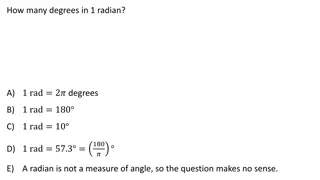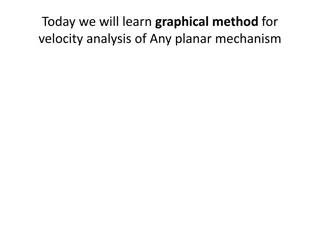Understanding Velocity vs. Speed in Physics
Velocity and speed are fundamental concepts in physics that describe how fast an object is moving and in what direction. While speed is a scalar quantity representing the rate of motion, velocity is a vector quantity that includes both speed and direction. Constant velocity implies steady speed and consistent direction, distinguishing it from constant speed. Changes in speed or direction indicate changes in velocity. An example provided illustrates how two cars traveling at the same speed but in opposite directions have different velocities.
Download Presentation

Please find below an Image/Link to download the presentation.
The content on the website is provided AS IS for your information and personal use only. It may not be sold, licensed, or shared on other websites without obtaining consent from the author. Download presentation by click this link. If you encounter any issues during the download, it is possible that the publisher has removed the file from their server.
E N D
Presentation Transcript
4.3 Velocity Speed is a description of how fast an object moves; velocity is how fast and in what direction it moves.
4.3 Velocity In physics, velocity is speed in a given direction. When we say a car travels at 60 km/h, we are specifying its speed. When we say a car moves at 60 km/h to the north, we are specifying its velocity.
4.3 Velocity A quantity such as velocity that specifies direction as well as magnitude is called a vector quantity. Speed is a scalar quantity. Velocity, like force, is a vector quantity.
4.3 Velocity Constant Velocity Constant speed means steady speed. Constant velocity means both constant speed and constant direction.
Changing Velocity If either the speedor the direction (or both) is changing, then the velocity is changing. Constant speed and constant velocity are not the same.
4.3 Velocity The car on the circular track may have a constant speed but not a constant velocity, because its direction of motion is changing every instant.
4.3 Velocity think! The speedometer of a car moving northward reads 60 km/h. It passes another car that travels southward at 60 km/h. Do both cars have the same speed? Do they have the same velocity?
Answer: Both cars have the same speed, but they have opposite velocities because they are moving in opposite directions.























